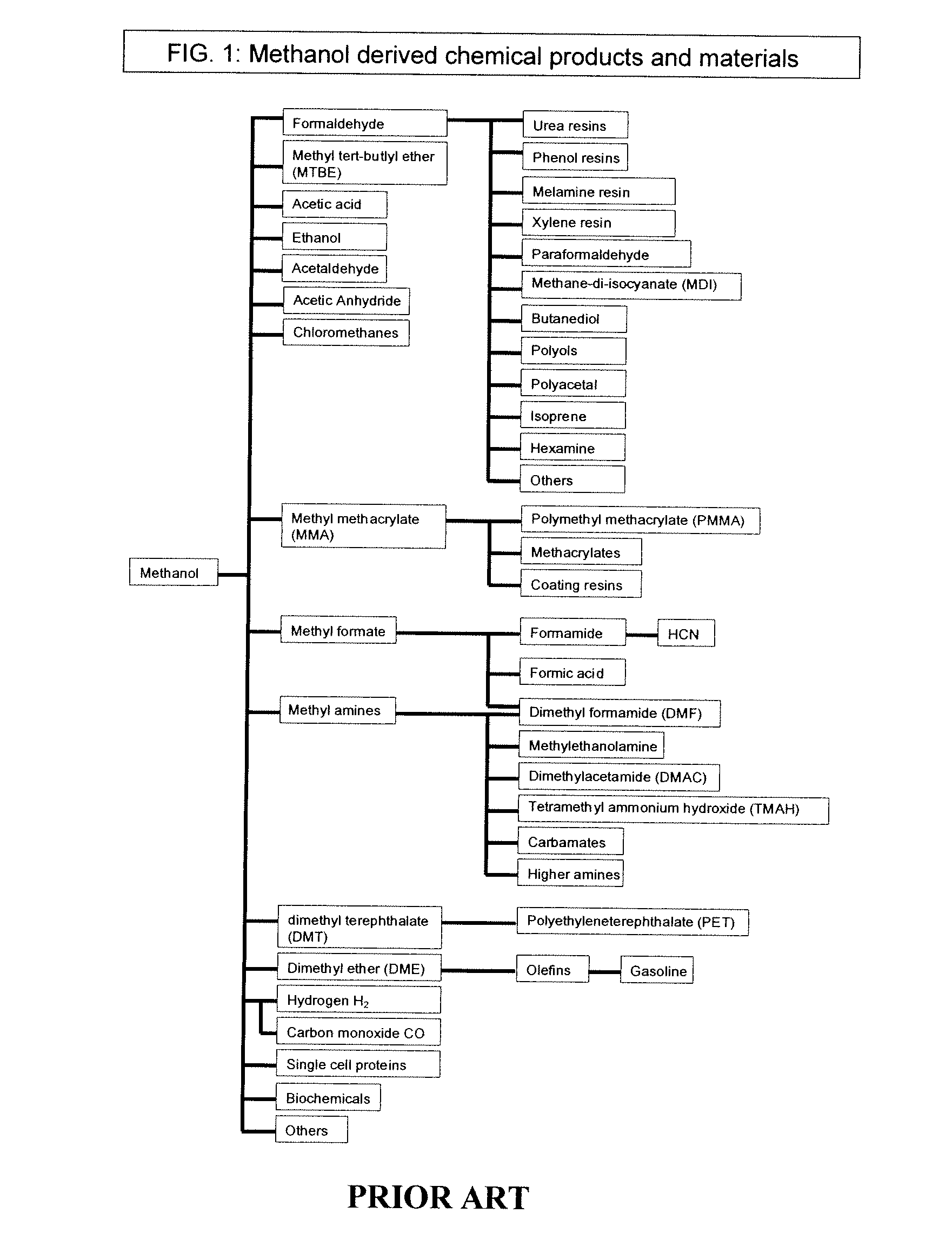Conversion of carbon dioxide to dimethyl ether using bi-reforming of methane or natural gas
a technology of dimethyl ether and carbon dioxide, which is applied in the preparation of ether by compound dehydration, physical/chemical process catalysts, ether preparations, etc., can solve the problems of high energy consumption, limited and disadvantages of fossil fuels, and inability to meet the requirements of a single-phase conversion process,
- Summary
- Abstract
- Description
- Claims
- Application Information
AI Technical Summary
Benefits of technology
Problems solved by technology
Method used
Image
Examples
example 1
[0072]A suitable molar mixture of CO2, methane (or natural gas) and steam (water) to allow for a conversion of methane and CO2 in excess of 90% is reformed in a single step in a flow reactor over a catalyst such as NiO at a temperature of about 800° C. to 850° C. to produce a gas mixture with a molar ratio of approximately 2.05 moles of hydrogen to one mole of carbon monoxide. In this Example, the catalyst support is fused alumina having a suitably large nanostructured surface. The NiO on fused alumina support is quite stable for the reforming process.
example 2
[0073]A mixture of methane, CO2 and H2O (3:1:2 mole ratio) is reacted over a catalyst composed of V2O5 / NiO supported on nanostructural high surface area fused silica to give a hydrogen / carbon monoxide gas mixture close to 2:1 suitable for the production of methanol.
example 3
[0074]Hydrogen and carbon monoxide produced close to 2:1 ratio, as in Example 1 and 2, are converted to produce methanol under catalytic reaction conditions using copper based catalysts.
PUM
| Property | Measurement | Unit |
|---|---|---|
| temperature | aaaaa | aaaaa |
| MON | aaaaa | aaaaa |
| RON | aaaaa | aaaaa |
Abstract
Description
Claims
Application Information
 Login to View More
Login to View More - R&D
- Intellectual Property
- Life Sciences
- Materials
- Tech Scout
- Unparalleled Data Quality
- Higher Quality Content
- 60% Fewer Hallucinations
Browse by: Latest US Patents, China's latest patents, Technical Efficacy Thesaurus, Application Domain, Technology Topic, Popular Technical Reports.
© 2025 PatSnap. All rights reserved.Legal|Privacy policy|Modern Slavery Act Transparency Statement|Sitemap|About US| Contact US: help@patsnap.com



